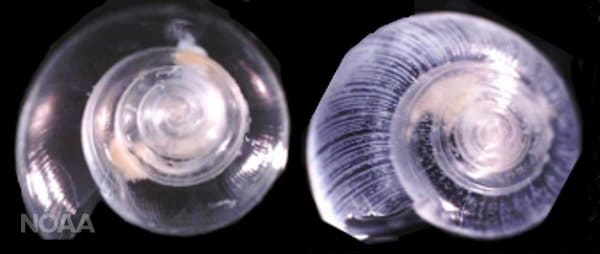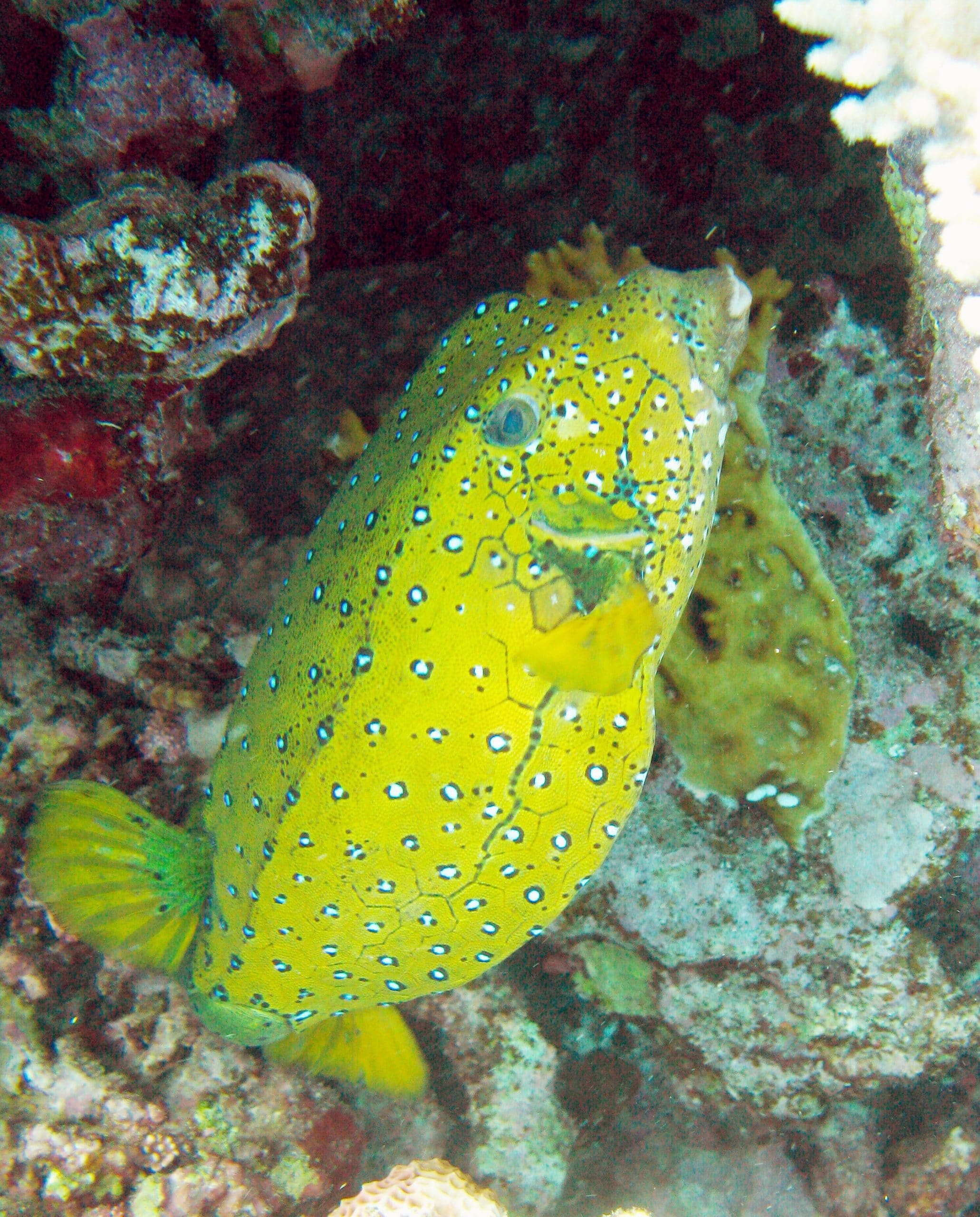Fact Friday

The ocean absorbs much of the excess carbon dioxide produced from the burning of fossil fuels. As the ocean absorbs this rampant increase in CO2, it reacts with sea water, changing the ocean’s chemistry. This process is called ocean acidification, and we are already seeing the negative impacts in our oceans. Here you can see the shell of the pteropod exposed to ocean acidification on the right is weaker and has visible damage, making it harder for the animal to survive.
Image credit: NOAA

May 9, 2025
Balloonfish
Animals have different defense mechanisms to help protect themselves from predators. The balloonfish is no exception. When an enemy attacks, this fish responds by puffing itself out and filling its stomach with air or water. The balloonfish expands its body to look larger in order to intimidate predators. In addition to their puffed-up status, their body is also covered in spines that make them look quite menacing.
Photo Credit: Andrew Bruckner




